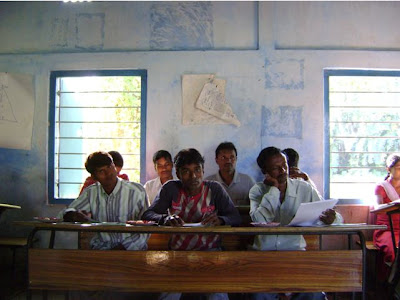By Anju Azad, TwoCircles.net,
Guwahati: Amir Hussain of village Barbaradi Reserve in block Guma Phulbari of Barpeta district in Assam shifted his house after losing all their property worth Rs one lakh due to the erosion in the last three years. They were farmers and now part-time daily wage earners.
Lack of employment opportunities in the region forced the family of 11 members to keep moving from one place to another. Three children in Amir’s family stopped going to school. Amir is 18. He left study and started working as daily wage labour to support his family though his earning of Rs 1500 a month is hardly enough for a human life.
The Barpeta district was carved out of Kamrup district of Assam in July 1983. Mahatma Gandhi visited Barpeta in 1934 and Jawaharlal Nehru in 1937. This district covers an area of 3245 square kms and touches international border i.e. Bhutan Hills in the North.
The district, famous for its culture and agricultural products especially green vegetables, has a life threatening issue which is completely ignored and unreported.

A young boy monitores the erosion rage on November 16, 2008
The village of Barbaradi has a population to a total of 12,000. In last three years, about three km area has been completely submerged in the Brahmaputra River that flows from east to west across the southern part of the Barpeta district. This erosion has enormously affected the life and income of the people. Villagers have reported of negligence by the state administration. Some tributaries of the river including Beki, Manah, Pohumara, Kaldia and Palla also flow through the district from north to south.
Lokman Hikimi, 35, has a different ordeal to tell. His seven family members including three women and four men are now daily wage earners. Earlier they were well established farmers. They lost property including worth Rs two lakh in erosion. He said that the river has ‘eaten’ all his belongings and peace of mind. His misery did not end here.
Lack of income opportunity dragged him to Guwahati city and there he faced harassment as suspected ‘illegal migrant’. He regretted that he is left with no source of livelihood. He calls it ‘dual problem’ both in his own area and in Guwahati city. As per his statement 99% of the village boys went to Guwahati in search of job and faced harassment. Many have returned home out of fear.

Picture of erosion site at Barbardi, Barpeta district as on November 16, 2008. The adjacent road doesn’t exist any more.
Hasen Khan is an 18-year-old boy in a family of six members in the same village. He said his family has no land to move their house and very soon their house will be into the river. This will damage property worth Rs two lakh.
Manowara Khatun, 25-year-old housewife, shifted her house twice. She is now working as domestic help to feed seven members of her family. An NGO CASA Guwahati has allotted a movable house and the family is taking shelter there. No other organization helped them.
Ratul Pathak, Khatun’s fellow villager, said that though his house is about one km away from the river it is still not safe.
According to the Census 2001 the Barpeta district has a population of 1,647,201, of which Muslims are 977,943 (59.37%).

Amir Hussain Khan, Hasen Khan and Lokman Hikimi attending a workshop on disaster management at Barbaradi Girls hogh school on November 16, 2008
On 13 November, 2008 the people of the Barbaradi village took out a procession and submitted a memorandum to the District Commissioner requesting urgent action to stop the erosion. Villagers received a positive response from government. Deputy Commissioner. A fund of Rs 30 lakh has been allotted to build a siege. The river at the periphery is about eight-mitre deep and boulders are being constantly poured into to create a concrete siege. A village committee named Brihottor Dakshinpub Gorakhohonia Pratirodh Sangram Samiti has been formed to monitor the overall work. Life in this village is truly a struggle for the survival.
Link: http://barpeta.nic.in/District%20at%20a%20glance.htm
[All photos by Anju Azad]

